While much of the medieval music we often hear about was performed in grand cathedrals and monasteries, not all melodies of the time were religious. Outside the sacred walls, music filled the air at feasts, festivals, village gatherings, and noble courts. This was secular music - songs that focused not on worship, but on stories of love, adventure, mischief, and everyday life.
Unlike the solemn chants of the church, secular music was lively and expressive. It featured catchy melodies, rhythmic patterns, and often a playful spirit. Talented performers - called troubadours, trouvères, minnesängers, and others - traveled across lands, singing songs that made people laugh, dream, and sometimes even fall in love.
This kind of music came in two main forms: vocal and instrumental. In this chapter, we’ll explore the world of secular vocal music - the voices that captured hearts and told tales. In the next, we’ll dive into the colourful world of instrumental music, from dances to dramatic performances.
Chanson
A French song performed by poet-musicians called troubadours and trouvères, often sharing stories of love and bravery.
Chansons typically featured a single melodic line with instrumental accompaniment, often using medieval string instruments like the lute.
Song: Tant m'abelis (So Much I Love)
Composer: Berenguier de Palazol
Song: Amour me fait desirer (Love Makes Me Desire)
Composer: Guillaume de Machaut
Song: Je vivroie liement(I Should Lead A Happy Life)
Composer: Guillaume de Machaut
Song: Ce jour de l’an que mant doist estrenier (This New Year's Day That One Must Celebrate)
Composer: Baude Cordier
Song: A Poste Messe (After Mass)
Composer: Lorenzo da Firenze
Part 3 - Secular Music In The Medieval Era
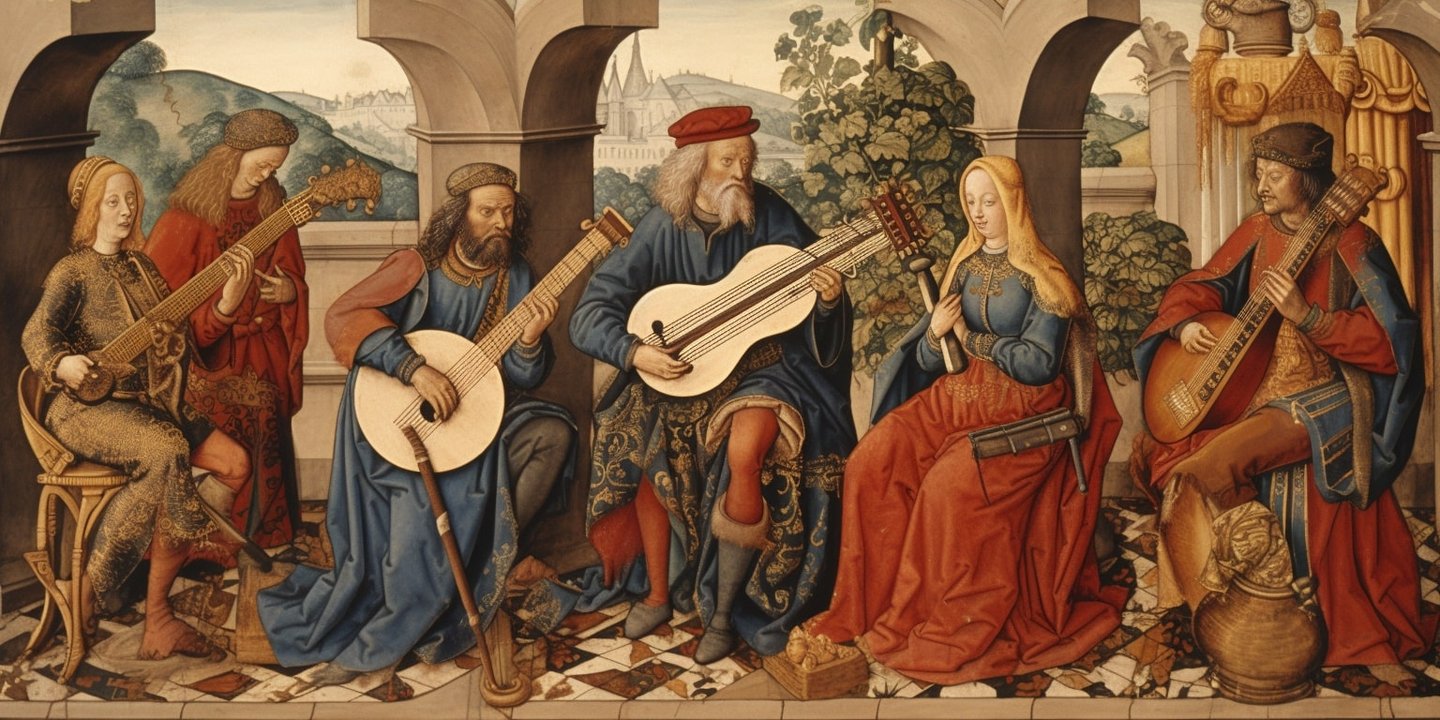

Ballade
A song with repeated melodies and poetic lyrics, similar to modern pop songs with verses and choruses.
Ballades often explored themes of courtly love, heroic tales, or moral lessons and were composed with intricate rhythms.
Rondeaux
A song with a repeated section (called a refrain), much like a catchy chorus in today's music.
Rondeaux were often performed at social gatherings, blending danceable melodies with memorable lyrics.
Virelai
A song with alternating melody sections, making it easy for people to sing along.
Virelais commonly featured playful themes, such as the joys of nature or the excitement of festivals.
Caccia
The caccia was a lively Italian secular song from the 14th century, meaning "hunt." It featured voices and instruments sounding in canon (like a musical chase) and often included a slower-moving part. Cacce (plural) brought to life energetic scenes like hunting, street vendors, or noisy marketplaces, sometimes with humorous sound effects.
Key Terms to Remember:
Troubadours: Troubadours were medieval poet-musicians, primarily from Southern France, who flourished between the 11th and 13th centuries, composing and performing lyric poetry and songs, often about courtly love and chivalry in Old Occitan language (langue d'oc), the language spoken in southern France at the time.
Trouvères: Trouvères were medieval poet-musicians who flourished in northern France, writing poetry in Old French (langue d'oïl) and composing mostly narrative works, like chansons de geste (songs of deeds or heroic ballads) and fabliaux (short, humorous stories in verse), similar to the troubadours of southern France but in a different language and region.
Minnesängers: Minnesängers were German poet-musicians from the 12th to 14th centuries who wrote and performed songs about courtly love, chivalry, and noble ideals. The word Minnesänger comes from the Middle High German word Minne, meaning love, and Sänger, meaning singer - so it literally means "love singer."
Canon: A canon is a musical form where one voice or instrument starts a melody, and then another voice enters later with the exact same melody, like a musical echo or round. In a caccia, two singers would perform in canon, creating the feeling of a chase or overlapping voices, often used to depict fast-moving scenes like hunting or market chaos.
Cantiga
As introduced in the last chapter, cantigas were monophonic songs from medieval Spain and Portugal, especially popular in the 13th century. So far, we have focused on sacred cantigas, which praised the Virgin Mary through stories of miracles.
Now, let’s explore secular cantigas, which told stories of love and longing - from a male perspective in cantigas de amor, and from a female perspective in cantigas de amigo.
These simple, monophonic songs were enjoyed at courts and social gatherings, featuring catchy melodies designed for easy singing and storytelling.
Song: Ondas do mar de Vigo (Waves of the Sea of Vigo) - Cantigas de amigo
Composer: Martim Codax
Influential Secular Music Figures
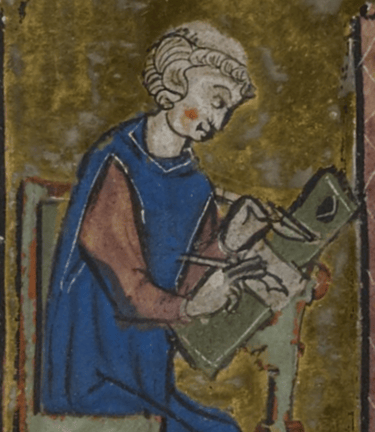

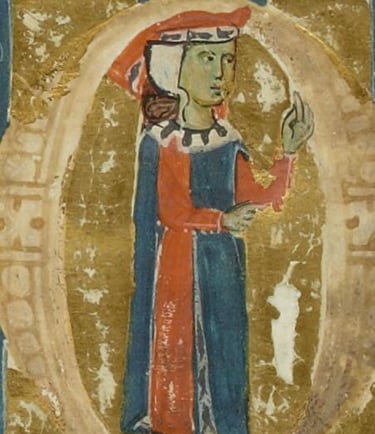

Walther von der Vogelweide
(c. 1170 – c. 1230)
A famous German minnesinger (a type of medieval courtly love poet and musician) known for his beautiful melodies and poetic lyrics. His works often explored themes of love, politics, and social commentary.
Adam de la Halle
(c. 1237 – c. 1288)
A French composer who blended secular and religious music. He created one of the earliest surviving musical plays called Le Jeu de Robin et Marion (The Play of Robin and Marion), which combined music, drama, and comedy.
Bernart de Ventadorn
(c. 1130 – c. 1200)
A renowned troubadour known for emotional love songs with poetic language and beautiful melodies. Bernart 's work "Can vei la lauzeta mover" (When I See the Lark Move) is famous for its theme of heartbreak.
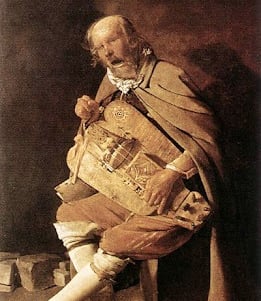

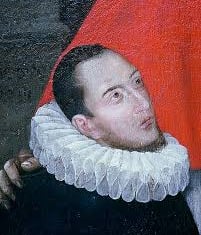

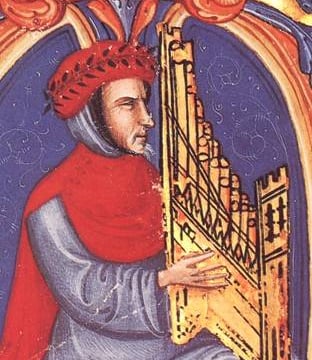

Jehan de Lescurel
(d. 1304)
A Parisian composer known for combining popular secular music with the complex rhythms and harmonies of the Ars Nova style. His works often explored themes of love and courtship.
Baude Cordier
(c. 1380 – after 1400)
Known for his unique notation style called the "eye music," where musical systems were shaped to look like hearts or circles to match the song's theme. His work added a playful and artistic touch to sheet music.
Francesco Landini
(c. 1325 – 1397)
A visually challenged well beloved Italian composer and organist who wrote hundreds of beautiful ballata (lyrical songs). He was famous for his "Landini cadence," a special melodic trick he used to end musical phrases.
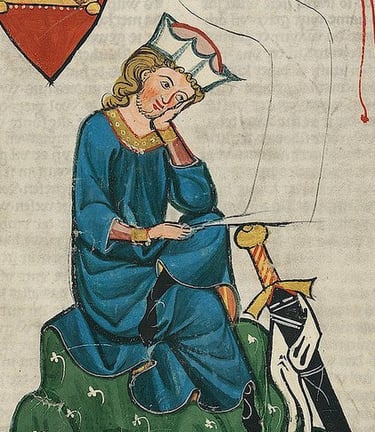

Notes:
"c." stands for circa, meaning "around" or "approximately."
"d." stands for "died" – it's used when a person's death year is known, but their birth year is uncertain or unknown.
Exact birth and death years are often uncertain for Medieval composers; estimates are based on the best available historical sources.
Key Terms to Remember:
Ars Nova (New Art): A 14th-century musical style that introduced greater rhythmic complexity, syncopation, and polyphony, marking a shift from the earlier Ars Antiqua style.
Ars Antiqua (Old Art): A term used to refer to the 12th-14th century musical style known for its early polyphony, rhythmic modes, and sacred works like organum and motets, led by composers such as Léonin and Pérotin.
Ballata: An Italian musical form popular during the Medieval period, typically featuring a structure similar to the modern verse-chorus pattern, often associated with dance.
Landini Cadence: A distinctive melodic pattern in medieval music, popularised by Francesco Landini, where the leading tone drops to the sixth scale degree before resolving to the tonic.